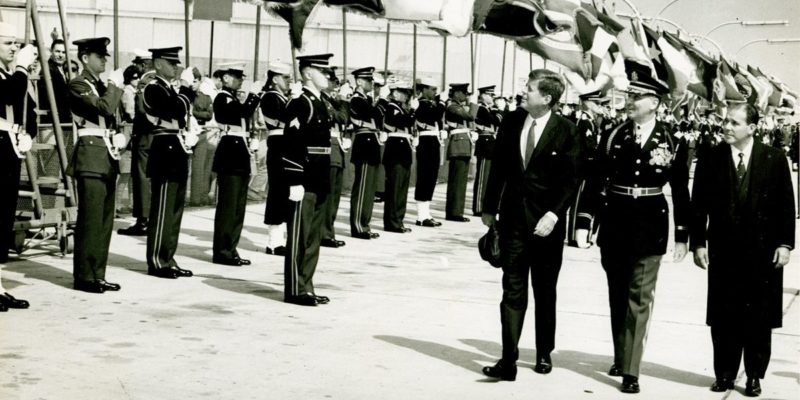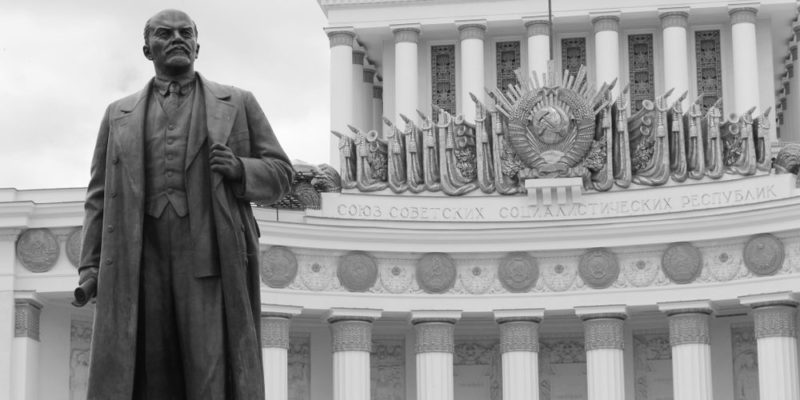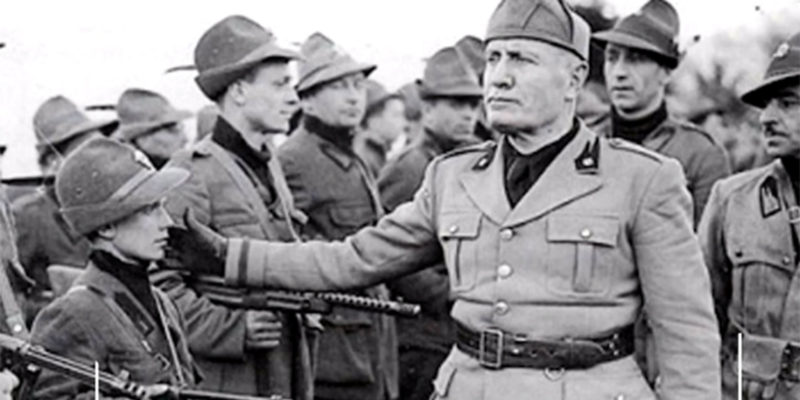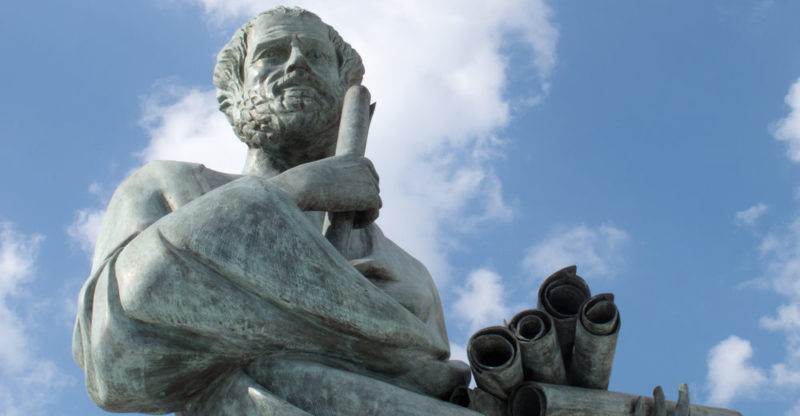We explain what tyranny is, what are the main characteristics of this type of government, and some examples of famous tyrants.
What is Tyranny?
Tyranny is a despotic form of government, exercised by a single person (then called a tyrant or caudillo ) through force and violence, instead of respect for the laws.
The word tyranny comes from ancient Greece ( tyrannos ), where it was used to designate a king who governs through violence and who accesses the throne without having real rights to do so, thus exercising illegitimate authority. Hence, the term was linked to that of the usurper, since the tyrant wielded a power that was not his but had appropriated it by force.
Currently, the term tyrant is more or less synonymous with the despot, satrap, and dictator, associated with injustice, rapacity, cruelty, arbitrariness, and illegitimacy, so it is pejorative use.
Characteristics of tyranny :
Etymology
The word tyranny was used for the first time in ancient Greece, to catalog the regime of Gyges de Lydia, who had ascended to the throne through mechanisms of force ( de facto ) and not of law ( de jure ).From then on the term tyrant was used for different and fierce rulers, such as Orthagoras of Sición, Fidón de Argos, and Clípselo de Corinth, considered than the first official “tyrants” in history, although many others would have existed before the invention. of the word.
Illegitimacy
 In principle, as has been said, every tyrant rises to de facto power, that is, through force and violence: through a coup, intervention by foreign forces, or even through a popular insurrection. This can mean, nowadays, numerous political tricks or deceptions, but in any case, they coincide with the illicit origin and are outside the law of the tyrant's government.
In principle, as has been said, every tyrant rises to de facto power, that is, through force and violence: through a coup, intervention by foreign forces, or even through a popular insurrection. This can mean, nowadays, numerous political tricks or deceptions, but in any case, they coincide with the illicit origin and are outside the law of the tyrant's government.
Authoritarianism
Whatever the origin of it, the power that the tyrant wields is always based on force and violent oppression, and not on compliance with the laws. A tyrant rules in a despotic, capricious way, imposing his own will as law on others, by threatening to exercise (military) force.On the other hand, tyrants once installed in power refuse to return it to the people they govern to be relieved of the throne through institutional, peaceful, and consensual channels. Rather, they do everything to stay in charge: they violate the laws, eliminate or prohibit all forms of opposition, resort to deception or coercion, etc.
Injustice
 Given that the tyrant controls a society ignoring the laws that, precisely, would forbid him to seize power by force and handle it as he pleases, it is an illegitimate and illegal form of government, in which the good The common man is usually subjugated to the will of the tyrant. Thus, injustice, arbitrariness, and cruelty accompany the tyrant and his henchmen, who exercise fear and pain as mechanisms of political and social control.
Given that the tyrant controls a society ignoring the laws that, precisely, would forbid him to seize power by force and handle it as he pleases, it is an illegitimate and illegal form of government, in which the good The common man is usually subjugated to the will of the tyrant. Thus, injustice, arbitrariness, and cruelty accompany the tyrant and his henchmen, who exercise fear and pain as mechanisms of political and social control.
Repression
The repression of any form of political opposition or of any attempt to protest or claim is typical of tyrannies . In modern dictatorships , for example, political persecution, forced disappearance, the prohibition of fundamental freedoms such as expression, free association and protest are common and constant elements.
Abuse
 Since the tyrant and his allies hold absolute power, without tolerating questions from other people, institutions, or communities, the abuse of power is a common reality of tyrannies. This translates into impunity for crimes committed by rulers, illegal appropriations of material goods, illicit enrichment, and other forms of corruption.
Since the tyrant and his allies hold absolute power, without tolerating questions from other people, institutions, or communities, the abuse of power is a common reality of tyrannies. This translates into impunity for crimes committed by rulers, illegal appropriations of material goods, illicit enrichment, and other forms of corruption.
Drop
 The fall of tyrannies is usually as violent as their appearance, that is, through massive insurrections, military rebellions, general strikes, or similar forms of pressure that impede the functioning of society until freedom is recovered.
The fall of tyrannies is usually as violent as their appearance, that is, through massive insurrections, military rebellions, general strikes, or similar forms of pressure that impede the functioning of society until freedom is recovered.This usually leads or is triggered by the death of the caudillo, in whose absence the structures supported by his figure and authority begin to collapse. In exceptional cases, only tyrannies have found their end through democratic exercises or elections, since tyrants often manipulate the system in their favor.
Tyranny of the majority
This specific term is called the possibility that democratic governments entail, in which the majority legally direct the destiny of the country, of oppressing a minority that, precisely because it is so, is unable to express its voice or assert its points of view.
Scholars of the subject
 There have been numerous philosophers, artists, and political thinkers in history whose reflections today allow us to define and understand tyranny. Among them are: Herodotus, Aristotle , Plutarch, William Shakespeare , Nicolás Machiavelli, Jean-Jacques Rousseau and John Locke.
There have been numerous philosophers, artists, and political thinkers in history whose reflections today allow us to define and understand tyranny. Among them are: Herodotus, Aristotle , Plutarch, William Shakespeare , Nicolás Machiavelli, Jean-Jacques Rousseau and John Locke.
Best known tyrants
 The list of tyrants that human history has seen is probably too long to even try to reproduce it, but among them, there are some more remembered than others, such as:
The list of tyrants that human history has seen is probably too long to even try to reproduce it, but among them, there are some more remembered than others, such as:
- Phalaris. Ruled Agrigento, Sicily, around 570 BC
- Caligula. Also known as Gaius Caesar, he ruled the Roman Empire between AD 37 and 41
- Nero. Emperor of the Roman Empire between AD 54 and 68
- Genghis Khan. Mongol warrior who unified the Asian tribes and founded the First Mongol Empire from 1206 to 1227 AD
- Adolf Hitler. He created the Third German Reich and ruled Germany beforehand during world War with his party.
The above content published at Collaborative Research Group is for informational and educational purposes only and has been developed by referring to reliable sources and recommendations from technology experts. We do not have any contact with official entities nor do we intend to replace the information that they emit.
MA student of the TransAtlantic Masters program at UNC-Chapel Hill. Political Science with a focus on European Studies. Expressed ideas are open to revision. He not only covers Technical articles but also has skills in the fields of SEO, graphics, web development and coding. .
Leave a reply
Your email address will not be published. Required fields are marked *Recent post

Sport: What Is It, Types, Risks, Features, Characteristics and Examples

Dogs: Emergence, Features, Characteristics, Feeding and Breeds

Story: Definition, Elements, Structure, Features and Characteristics

